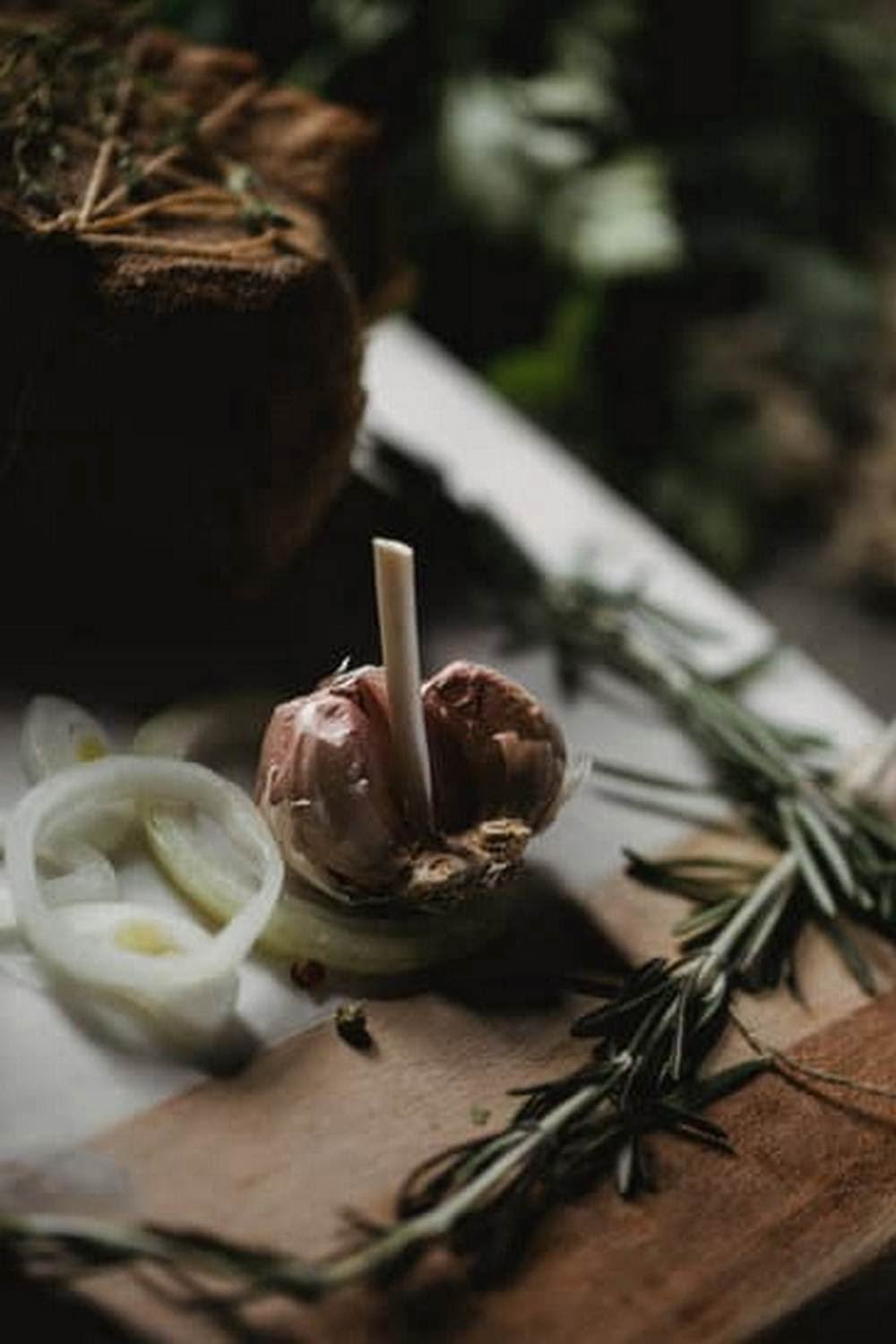Are you a vegetable gardener interested in learning seed saving techniques? Seed saving is an important practice for maintaining genetic diversity and sustainability in your garden. In this article, we will explore the basics of seed saving and why it is crucial for every vegetable gardener to understand and implement.
Seed saving techniques for the vegetable gardener are essential for preserving heirloom and open-pollinated seeds, ensuring a continuous cycle of plant growth, and promoting self-sufficiency. From understanding seed viability to avoiding cross-pollination, there are various aspects to consider when it comes to preserving and storing seeds.
In the following sections, we will delve into the various aspects of seed saving, including how to determine seed quality, different techniques for different types of vegetables, best practices for harvesting and storing seeds, as well as troubleshooting common problems that may arise during the process. Whether you are new to seed saving or looking to improve your technique, this comprehensive guide will provide you with the knowledge and tools you need to get started.
Understanding Seed Viability and Quality
When it comes to seed saving, one of the most important factors to consider is seed viability and quality. Understanding these aspects will help you determine if seeds are worth saving and ensure the success of your vegetable garden in the long run.
What Is Seed Viability?
Seed viability refers to the ability of a seed to germinate and grow into a healthy plant. This is determined by factors such as genetics, age, storage conditions, and environmental factors. Seeds with high viability have a better chance of sprouting and producing strong, vigorous plants.
Assessing Seed Viability
There are several methods that can be used to assess seed viability. One common method is the germination test, where you plant a sample of seeds in optimal conditions and observe how many sprout. The percentage of seeds that successfully germinate can give you an idea of their overall viability. You can also look for physical signs of seed quality such as color, size, and weight. Healthy seeds are often plump, firm, and free from mold or damage.
The Importance of Quality Seeds
Quality seeds are essential for a successful vegetable garden. By saving seeds from the healthiest and most productive plants in your garden, you can preserve desirable traits such as disease resistance, flavor, and yield. Quality seeds also contribute to genetic diversity within plant populations, which is crucial for maintaining resilient and sustainable food systems.
Understanding seed viability and quality is essential for any vegetable gardener looking to save seeds for future crops. By assessing the potential of your seeds and ensuring their quality, you can contribute to the long-term success of your garden while preserving valuable genetic diversity.
Seed Saving Techniques for Different Types of Vegetables
When it comes to seed saving techniques for the vegetable gardener, it is important to understand that different types of vegetables have different requirements. Here is a comprehensive guide to seed saving techniques for various types of vegetables:
1. Tomatoes: To save tomato seeds, choose ripe, juicy tomatoes and scoop out the seeds along with the gel surrounding them. Ferment the seeds in a jar for a few days, then rinse and dry them before storing.
2. Squash and Pumpkins: For squash and pumpkins, allow the fruits to fully ripen on the vine before harvesting. Remove the seeds from the flesh and wash off any pulp before drying them thoroughly.
3. Leafy Greens: When saving seeds from leafy greens such as lettuce or spinach, allow some plants to bolt and produce flowers. Once the flowers have dried up and turned into seed heads, collect them and store in a cool, dry place.
4. Beans and Peas: Allow beans and peas to fully mature on the plant before harvesting for seed saving. Once the pods are dry, remove the seeds and store them in a cool, dry place.
5. Brassicas: Brassicas such as broccoli or cabbage can be challenging for seed saving due to their tendency to cross-pollinate. To avoid this issue, separate different varieties by at least half a mile when growing for seed saving.
By following these specific techniques for each type of vegetable, you can ensure successful seed saving in your garden while maintaining genetic diversity and preserving heirloom varieties.
The Best Practices for Harvesting and Storing Seeds
When it comes to seed saving techniques for the vegetable gardener, proper harvesting and storing of seeds is essential to ensure their longevity and viability for future planting. Here are some best practices to consider when it comes to harvesting and storing seeds:
- Harvesting Seeds: When harvesting seeds from your vegetables, it’s important to choose the healthiest and most robust plants for seed production. Allow the vegetables to fully ripen on the plant before collecting the seeds. For dry-seeded vegetables such as beans or lettuce, allow the pods or seed heads to dry completely on the plant before harvesting.
- Cleaning Seeds: After harvesting, it’s crucial to clean the seeds to remove any debris or remaining plant material. This can be done by hand or with screens to separate the seeds from unwanted material. Properly cleaned seeds will have a better chance of staying viable during storage.
- Storing Seeds: To maximize seed longevity, it’s important to store them in a cool, dry, and dark environment. Place the cleaned seeds in labeled envelopes or airtight containers with silica gel packets to absorb moisture. Be sure to store them away from direct sunlight and fluctuations in temperature.
By following these best practices for harvesting and storing seeds, vegetable gardeners can ensure that their saved seeds remain viable for future planting. Taking the time and care to properly harvest, clean, and store seeds will contribute to a successful seed saving practice and help maintain genetic diversity within vegetable varieties.
Remember that different types of vegetables may require specific techniques for harvesting and storing their seeds. By understanding these variations and implementing the appropriate methods, you can increase the likelihood of successfully saving viable seeds from your garden harvests.
Avoiding Cross-Pollination
Cross-pollination occurs when two plants of the same species transfer pollen, resulting in seeds that carry genetic material from both parent plants. For vegetable gardeners interested in seed saving, cross-pollination can compromise the purity and quality of the seeds being saved. To ensure seed purity in your garden, there are several strategies and techniques that can be employed to minimize the risk of cross-pollination.
One effective method to prevent cross-pollination is by spacing plants properly. Different vegetable crops have varying distances at which they can be safely planted without the risk of cross-pollination. Understanding the specific requirements for each type of vegetable will help you plan your garden layout accordingly. Additionally, utilizing physical barriers such as row covers or isolation cages can further reduce the likelihood of unwanted pollen transfer between plants.
Another key strategy for avoiding cross-pollination is by staggering plantings and timing the flowering periods of different varieties. By planting related crops at different times or selecting early and late-maturing varieties, you can minimize overlap in their blooming periods, reducing the chance of cross-pollination occurring. This technique requires careful planning and attention to detail, but it can be a highly effective way to maintain seed purity in your garden.
It is important to note that some vegetables are more prone to cross-pollination than others, and certain plant families have a higher tendency for interbreeding. Being aware of these factors and applying appropriate prevention methods will greatly contribute to successful seed saving efforts for the vegetable gardener.
| Seed Saving Technique | Description |
|---|---|
| Proper Plant Spacing | Understanding ideal distances between related crops to prevent cross-pollination |
| Staggered Plantings | Scheduling plantings and selecting early/late-maturing varieties to minimize overlapping flowering periods |
Seed Saving Equipment and Tools
When it comes to seed saving, having the right equipment and tools is crucial for success. One of the most important items you will need is a good pair of scissors or pruning shears for harvesting mature seed heads from your plants. Additionally, having envelopes or small containers for storing seeds is essential to ensure they stay dry and protected from pests.
Another important tool for seed saving is a fine-mesh sieve or screen, which can be used to separate seeds from chaff and debris. This is particularly useful for seeds that are small or have a lot of chaff attached to them. You may also want to invest in some glass jars with tight-fitting lids for long-term storage of your saved seeds.
A moisture-free environment is also critical for successful seed saving, so consider purchasing desiccant packets or silica gel to keep moisture levels low when storing seeds. Lastly, if you plan on exchanging seeds with other gardeners, having labels and markers to clearly identify your saved seeds will be important.
In addition to these basic tools and equipment, there are also specialized items that can make the seed saving process easier and more efficient. For example, there are seed threshers and winnowers available for separating seeds from their hulls or pods, as well as seed cleaning screens designed to remove debris without damaging delicate seeds. By investing in the right equipment and tools from the start, you can set yourself up for successful seed saving techniques for the vegetable gardener.
| Seed Saving Equipment | Tools |
|---|---|
| Scissors/pruning shears | Envelopes/small containers |
| Fine-mesh sieve/screen | Glass jars with tight-fitting lids |
| Desiccant packets/silica gel | Labels/markers |
The Role of Heirloom and Open-Pollinated Seeds in Seed Saving
Preserving genetic diversity is a crucial aspect of seed saving for the vegetable gardener. This section will provide an in-depth look at the role of heirloom and open-pollinated seeds in preserving genetic diversity, and why it is important for gardeners to incorporate these seeds into their seed saving practices.
The Importance of Heirloom and Open-Pollinated Seeds
Heirloom and open-pollinated seeds are essential for maintaining genetic diversity within plant species. Unlike hybrid seeds, which are created by cross-breeding two different varieties, heirloom and open-pollinated seeds have been passed down through generations without any human intervention. This means that these seeds contain a diverse range of traits that have been naturally selected over time, making them well-adapted to specific environmental conditions and pests.
Preserving Genetic Heritage
By saving and planting heirloom and open-pollinated seeds, gardeners play a crucial role in preserving the genetic heritage of plants. Many modern commercial varieties of vegetables lack the diversity and resilience found in heirloom and open-pollinated varieties. By growing these older, traditional varieties, gardeners contribute to the conservation of plant genetics that might otherwise be lost.
Supporting Sustainable Agriculture
In addition to preserving genetic diversity, using heirloom and open-pollinated seeds also supports sustainable agriculture. These seeds can be saved and replanted year after year, reducing the need for farmers and gardeners to purchase new seeds annually. This not only saves money but also reduces dependence on large seed companies. Overall, incorporating heirloom and open-pollinated seeds into seed saving practices fosters a more sustainable and self-sufficient approach to gardening.
The Benefits of Seed Saving for the Vegetable Gardener
Seed saving is not only a valuable practice for the vegetable gardener, but it also brings with it a host of benefits. One of the most obvious advantages is the potential for significant cost savings. By saving seeds from your own plants, you can reduce or eliminate the need to purchase new seeds each year.
This can be especially beneficial for larger gardens or commercial growers, who may otherwise spend a substantial amount on seed purchases annually. In addition to saving money, seed saving also promotes sustainability by reducing reliance on seed companies and preserving plant diversity.
Furthermore, adopting seed saving techniques can contribute to greater self-sufficiency as a gardener. Rather than depending on external sources for seeds, you have the ability to produce your own high-quality seeds suitable for your specific growing conditions and preferences. This self-reliance can provide a sense of empowerment and independence, as well as the flexibility to experiment with different varieties and adapt to changing environmental factors without the constraints of purchasing new seeds each season.
Beyond financial and practical considerations, seed saving plays an important role in preserving genetic diversity within our food supply. Heirloom and open-pollinated varieties often carry unique traits that may be lost if not actively conserved through seed saving efforts.
By keeping these traditional varieties alive, gardeners contribute to biodiversity and help safeguard our agricultural heritage for future generations. Understanding the wide-ranging benefits of seed saving makes it an invaluable practice for any vegetable gardener looking to take their hobby or profession to the next level.
Troubleshooting Common Seed Saving Problems
In conclusion, mastering the art of seed saving is a rewarding and essential skill for any vegetable gardener. By understanding the basics of seed saving and being able to determine seed viability and quality, gardeners can ensure a sustainable and self-sufficient supply of seeds for future planting seasons. The comprehensive guide to seed saving techniques for different types of vegetables provides valuable insights into the specific requirements for each type of plant, allowing gardeners to maximize their success.
Harvesting and storing seeds properly is crucial in maintaining their longevity, and by following the best practices provided, vegetable gardeners can extend the shelf life of their seeds. Avoiding cross-pollination is another important aspect of ensuring seed purity in the garden, and understanding how to prevent it is key to preserving genetic diversity. Equipping oneself with the necessary tools and equipment for seed saving is also vital, as it allows for efficient and effective seed collection and storage.
Finally, recognizing the benefits of seed saving, such as cost savings, sustainability, and maintaining control over the source of one’s seeds is fundamental. Additionally, appreciating the role that heirloom and open-pollinated seeds play in preserving genetic diversity underscores the importance of this practice.
Troubleshooting common seed saving problems will allow vegetable gardeners to overcome challenges they may encounter while honing their technique, ultimately leading to a successful harvest season after season. With these techniques at hand, vegetable gardeners can look forward to self-sufficiency in their gardening endeavors.
Frequently Asked Questions
How Do You Save Seeds for Vegetable Gardens?
One way to save seeds for vegetable gardens is by collecting the seeds from ripe, healthy vegetables at the end of the growing season. These seeds should be dried and stored properly to ensure viability for future planting.
How Can a Gardener Save Their Own Seeds?
Gardeners can save their own seeds by choosing open-pollinated or heirloom varieties of vegetables, as these will produce seeds that are true to type. It’s important to allow the vegetables to fully ripen on the plant before harvesting the seeds, and then properly clean and store them.
What Are the Easiest Vegetables to Save Seed?
Some of the easiest vegetables to save seed from include beans, peas, tomatoes, peppers, and lettuce. These vegetables are relatively simple to work with when it comes to saving seeds and can be a good starting point for beginner seed savers.

If you’re looking to get into vegetable gardening, or are just looking for some tips on how to make your current garden better, then you’ve come to the right place! My name is Ethel and I have been gardening for years. In this blog, I’m going to share with you some of my best tips on how to create a successful vegetable garden.





